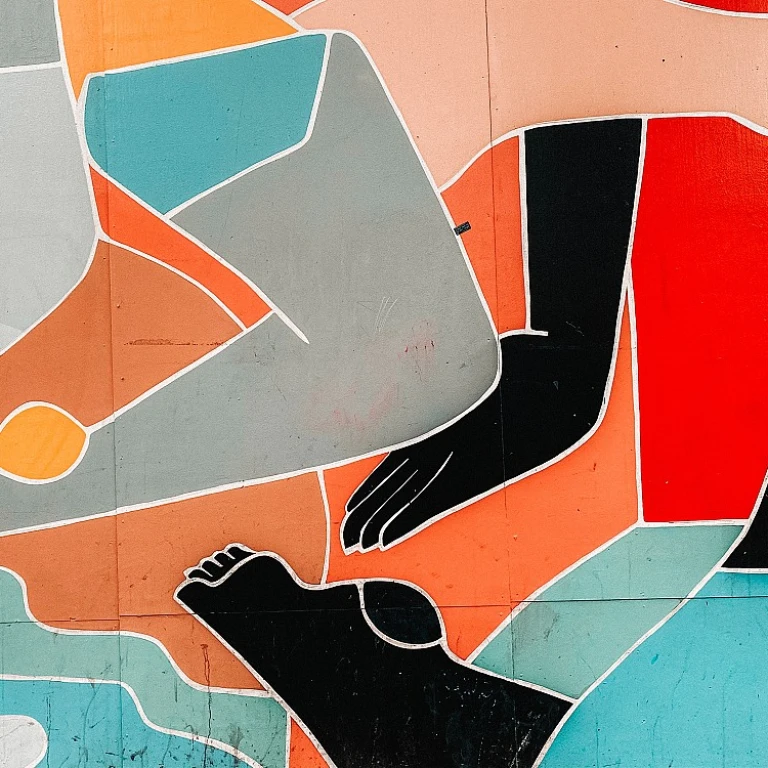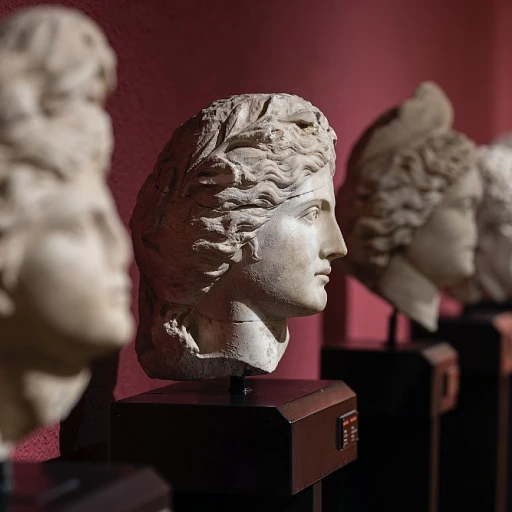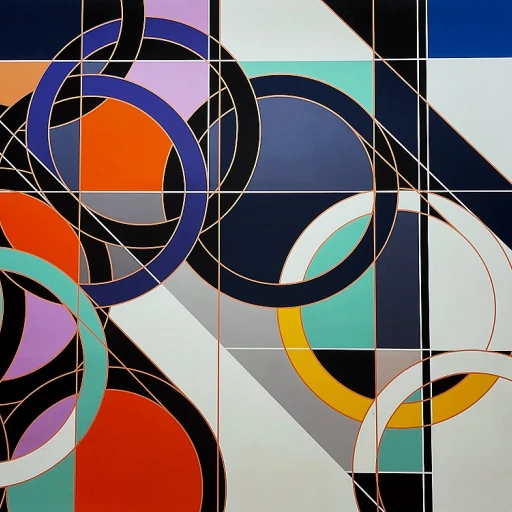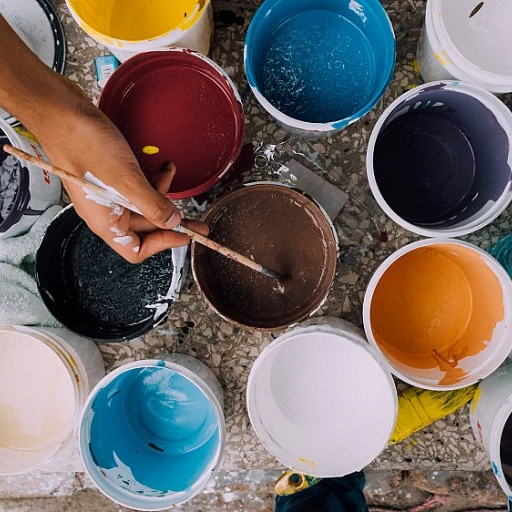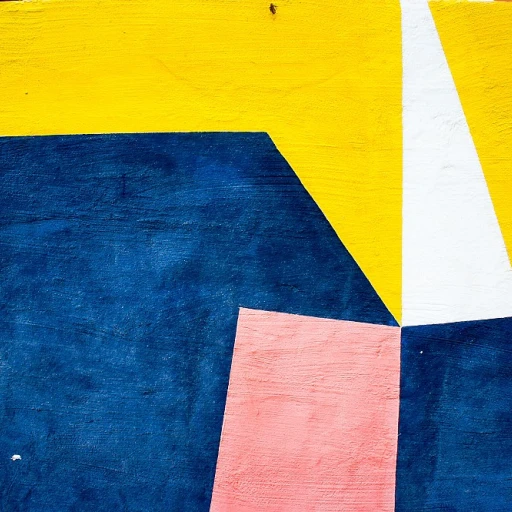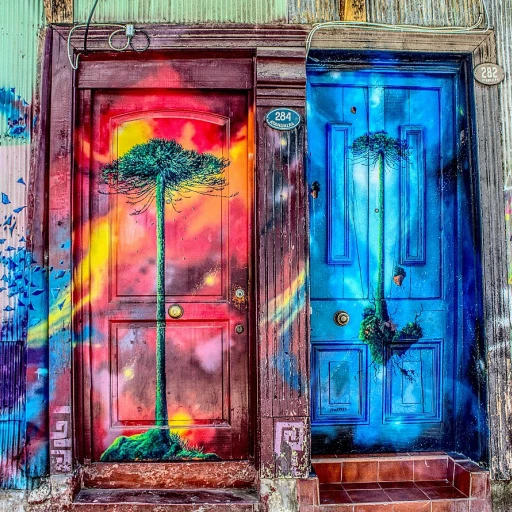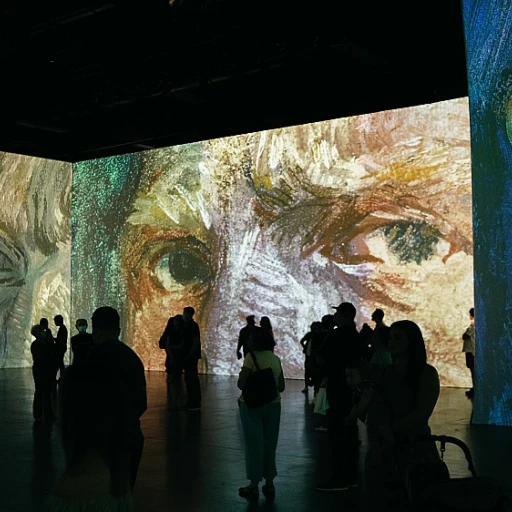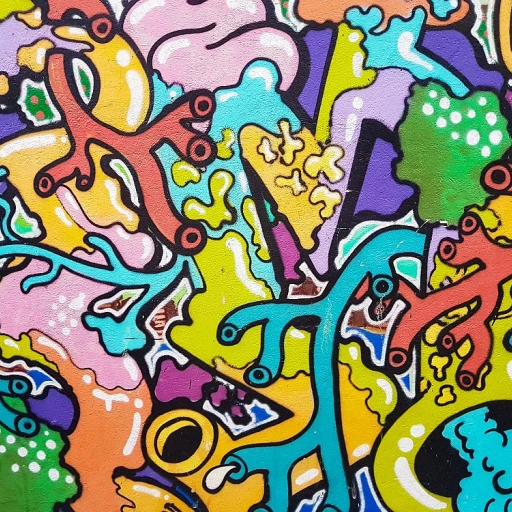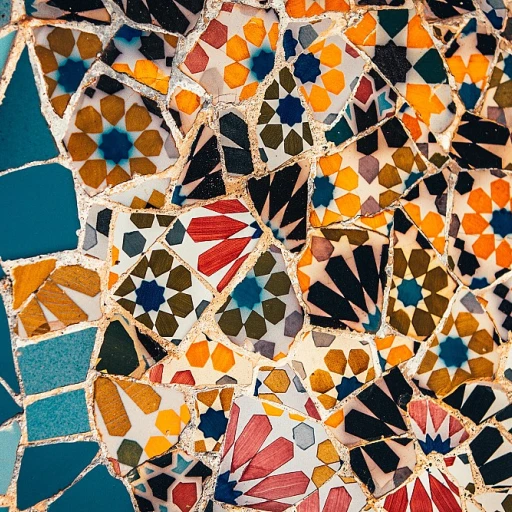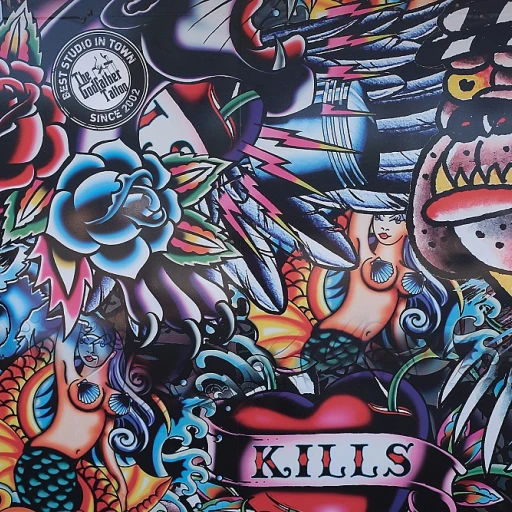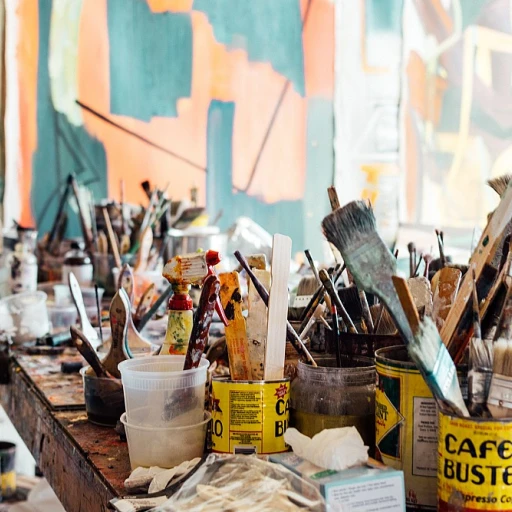-teaser.webp)
The Intersection of Urban Art and Luxury
The Fusion of Urban Expression and Opulence
In recent years, the once gritty and rebellious world of graffiti has found a surprising ally in the realm of luxury. This intersection of urban art and opulence has given rise to a new wave of creativity, where the streets meet the gallery walls in a harmonious blend. The evolution of post-graffiti art is a testament to how this art form has transcended its origins, moving from the fringes of society to the heart of high-end collections.
Graffiti, once considered a form of vandalism, has now been embraced as a legitimate art form. Artists who started as graffiti writers on the streets of New York and Los Angeles are now celebrated in prestigious exhibitions and luxury spaces. The movement has seen the likes of Keith Haring and Jean Michel Basquiat, who began their journeys with spray cans, become icons in the contemporary art world.
The transformation of graffiti into post-graffiti art involves more than just a change in medium. It represents a shift in perception, where the raw energy of street art is refined and presented in a way that appeals to luxury art lovers. This evolution is not just about aesthetics; it's about the cultural significance of graffiti culture and its impact on contemporary art.
As galleries and curators play a pivotal role in this transformation, they help bridge the gap between the streets and the art world. By showcasing the works of artists like Lee Quinones and Lady Pink, these spaces provide a platform for graffiti artists to gain recognition and legitimacy. The allure of surf-inspired luxury art can be seen as a parallel, where unconventional art forms find their place in luxury settings.
In this evolving landscape, the challenge lies in valuing post-graffiti art. As the movement gains momentum, questions about the price and worth of these artworks become more prominent. The future of post-graffiti art in luxury spaces promises to be as dynamic and unpredictable as the streets from which it originated.
Key Artists Shaping the Post-Graffiti Movement
Influential Figures in the Post-Graffiti Scene
The post-graffiti movement has been significantly shaped by a number of pioneering artists who transitioned from the streets to luxury spaces, redefining what graffiti can mean in the world of contemporary art. These artists have managed to elevate graffiti from its urban roots to a legitimate art form that commands attention and respect in galleries and high-end collections.
One of the most notable figures in this movement is Jean-Michel Basquiat, whose work transcended traditional graffiti to become a staple in the art world. His ability to blend street culture with fine art elements has inspired countless others to follow in his footsteps. Similarly, Keith Haring's bold, graphic style brought street art into the mainstream, making it accessible to a wider audience.
Artists like Kenny Scharf and Lady Pink have also been instrumental in this evolution. Scharf's vibrant, playful works have graced both the streets and prestigious galleries, while Lady Pink has been a trailblazer for female graffiti artists, proving that the art form is not limited by gender. Their contributions have helped to legitimize graffiti as a respected art form.
In more recent years, artists such as Felipe Pantone have continued to push the boundaries of post-graffiti art. His work, which often incorporates elements of digital culture, reflects the ever-evolving nature of the movement. The influence of these artists can be seen in exhibitions around the world, from New York to Los Angeles, and even in cities like Sydney.
For those interested in exploring more about the allure of contemporary art and its various forms, including the impact of artists like Murakami, you can read more in our exploration of Murakami art prints.
The Role of Galleries and Curators
The Crucial Role of Exhibitions and Art Dealers
The rise of post-graffiti as a legitimate art form primarily owes its success to the vital roles played by galleries and curators in the art world. Street art, once perceived merely as a rebellious youth culture, has transformed into a formidable presence in contemporary art galleries globally. The keen eye of galleries and curators has been instrumental in elevating graffiti from public streets to the refined settings of established art spaces. In cities like New York, Los Angeles, and across the globe, art exhibitions tailored to highlight the talents of graffiti artists have become customary. These exhibitions offer artists the opportunity to break away from the conventional street environment and showcase their work in a controlled, aesthetic space. Prominent figures in the industry have been pivotal in their approach; recognizing that the intrinsic urban elements and dynamic energy of street art can thrive even in luxury settings. Galleries such as Fun Gallery in the 1980s played a significant role in this transition, paving the way for artists like the iconic Keith Haring and others whose works have become synonymous with the post-graffiti movement. This shift was further solidified by the involvement of influential art dealers who not only promoted but also helped shape the narrative around graffiti art, embellishing its value and appeal to luxury collectors. As post-graffiti garnered more attention, its price tag naturally escalated, placing works by artists at the forefront of high-end art collections. Art dealers act as intermediaries between the creator and acquirer, playing a critical role by providing a platform that allows emerging talents to flourish while attracting the discerning eyes of collectors. Furthermore, through curated exhibitions, these art institutions also provide necessary context and insight into graffiti art, fostering a deeper understanding of its cultural significance. Informed curators blend historical perspectives with contemporary art trends, ensuring that the evolution of post-graffiti is presented accurately and in a compelling manner. For those interested in further exploring the intersection of contemporary works and their cultural significance, visiting curated exhibitions or focused galleries can provide an immersive experience. Art dealers and curators continue to innovate and adapt, perpetuating the growth of graffiti as a form of dynamic expression and luxury art. To delve deeper, explore the allure of Son of Man prints.Challenges in Valuing Post-Graffiti Art
Evaluating the Worth of Urban Creativity
Navigating the world of post-graffiti art in terms of valuation presents a unique set of challenges. This art form, which emerged from the streets and gradually found room in high-end galleries, defies traditional norms of authentic appraisal. The difficulty lies partly in its inherent nature—rooted in graffiti, which has always been seen as a rebellious and transitory form of expression. Determining the price of such artworks, especially when considering their historical background in graffiti culture, remains largely subjective. Unlike classic works of art, which are often appraised based on factors like lineage, condition, or provenance, post-graffiti art demands a different approach. It involves acknowledging the duality of graffiti as both a street-level phenomenon and a formally recognized art form. For collectors and galleries, the artist's reputation and the title of their work can significantly influence value. Artists who have successfully transitioned from street art to the gallery setting, effectively bridging the gap between urban expression and luxury spaces, often command higher prices for their artworks. The influence of renowned graffiti artists, who initially found fame in city streets, plays a crucial role in setting benchmarks for valuation. Yet, the fluidity of this art movement means that valuations are frequently updated, reflecting shifts in both the artists' careers and market demands. From New York to Los Angeles and beyond, galleries showcase exhibitions that reexamine the worth of post-graffiti art, often drawing in influential curators who understand the subtle intricacies of this evolving sector. The volatility of the art world further complicates the process. Factors such as changing cultural perceptions, the transitioning nature of graffiti writing, and the urban legacy that artists bring into their contemporary art practices contribute to this dynamic landscape. The cultural relevance of the graffiti movement and its transformation into legitimate art is still unfolding, making future projections and valuations an unpredictable, but engaging endeavor. As post-graffiti art continues to gain traction in high-end collections, these challenges will likely persist, prompting ongoing dialogues among appraisers, collectors, and enthusiasts about the intrinsic and market value of these expressive works.Post-Graffiti Art in High-End Collections
Post-Graffiti's Place in Elite Collections
In recent years, post-graffiti art has found its way into the most prestigious collections, marking a significant shift from its origins on the streets to the walls of luxury spaces. This transition highlights the growing recognition of graffiti as a legitimate art form, bridging the gap between urban culture and high-end art markets.
Collectors are increasingly drawn to the raw energy and cultural narratives embedded in post-graffiti artworks. The movement's pioneers, such as Keith Haring and Jean Michel Basquiat, have paved the way for contemporary artists like Felipe Pantone and Lady Pink, whose works now command high prices at auctions and galleries worldwide. The appeal lies in the unique blend of street art aesthetics with contemporary themes, making these pieces highly sought after by discerning collectors.
High-end galleries and exhibitions play a crucial role in elevating the status of post-graffiti art. Institutions like the Fun Gallery in New York have been instrumental in showcasing the works of graffiti artists, helping to legitimize the art form within the broader contemporary art scene. This exposure not only increases the value of individual pieces but also enhances the overall perception of graffiti culture as a vital component of modern art.
Despite its growing popularity, valuing post-graffiti art remains a challenge. The subjective nature of art appraisal, combined with the movement's roots in street culture, complicates the process. However, the involvement of renowned curators and galleries ensures that these artworks are assessed with the same rigor as traditional art forms, further solidifying their place in high-end collections.
As the post-graffiti movement continues to evolve, its presence in luxury collections is likely to expand. Collectors who appreciate the dynamic interplay between urban art and luxury spaces will continue to seek out these works, ensuring their place in the art world for years to come.

